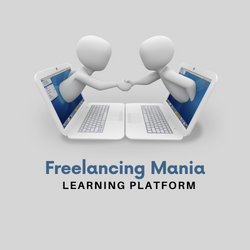Life Cycle of Mobile App Development
Every field has a cycle. Similarly, there is a life cycle in Mobile App Development as well. So we are going to discuss it today. It means from where the work starts and how it is going to end. Succinctly this cycle consists of:
- Requirements
- UI/UX
- Development
- Testing
- Deployment
Let’s discuss them in detail.
Requirements
If we are doing Mobile App Development via freelancing or through a company, the first step is to get requirements from clients. For example, we can ask what kind of mobile app is required to be developed and with which kind of features. Like E-Commerce etc. We can also ask for documented requirements. If it is available then it is easy to move forward by following these documented requirements. Unfortunately, most clients do not have documented requirements. In this scenario, we have to use our communication skills in order to get them.
Knowing all requisite features
If a client asks for an E-commerce application, then we ask that there are a lot of features in such apps like a wish list, order module, discount feature, and gifts concept. We can ask what kind of features do you want. Basically, It is our responsibility to get all answers forcefully through communication/ chat. Mainly orders are canceled on Fiverr and upwork due to a lack of these requirements. So it is a very important step.
Provision of Reference App
In case we start the work without knowing the requirements and complete our project. Then it can hurt us as clients can say it is not as per their requirements. We can also ask for a reference app. If it exists, we can ask for its link. We will then further discuss whether all features of the referred app are to be included or specific features. This means asking even for little things like sign-up passwords, etc.
Arrangement of Zoom Meeting
If the clients do not even have a reference app then we need to discuss everything with him via Zoom or chat. In the end, we need to write all these requirements discussed with the client and confirm from him whether it’s OK. Then we should proceed. It will benefit us in the long term because in case the client asks for extra features in the future then he will need to pay. To make an e agreement we can use the following site:
UI/UX Design
The next step is to design this app. If we are unable to do it by ourselves then we can hire a freelancer for this purpose. It would be designed as per requirements. Then we will show it to the client and after the necessary changes, this step will also be completed.
Development
After finalizing and locking a design, the most important stage i.e. development is going to start. Here, we will convert the UI/UX design to the mobile screen. It is important to note that there are two types of developers:
i) Front-end Developer
ii) Back-end Developer
Frontend development work is to be done by us. Whereas backend development is a separate work that will be completed by experts in that field by managing Server APIs. Every app has APIs and we will discuss it in detail in coming classes.
Testing
Hurray! we are almost there. Now we will test whether all functions are working properly in our app or not. We need to test even little things. It can approximately take 7 to 10 days.
Deployment
Now it’s time to upload our app. It will also be a time-consuming process especially since iOS takes much more time. It is called approval time.
When this life cycle is completed it means our Mobile App is completed. Though there is maintenance after deployment too but it is not included in this cycle. These are all development phases and footsteps in the way of making a successful mobile app!
ROBINA KOUSAR
Content Writer
**************************
You can get all Mobile App Development Classes link from here:-
